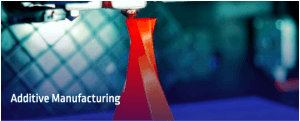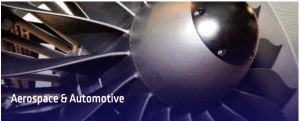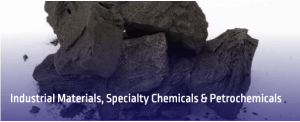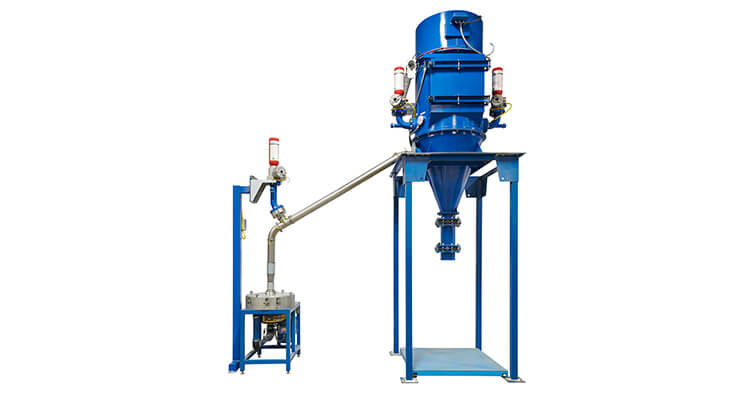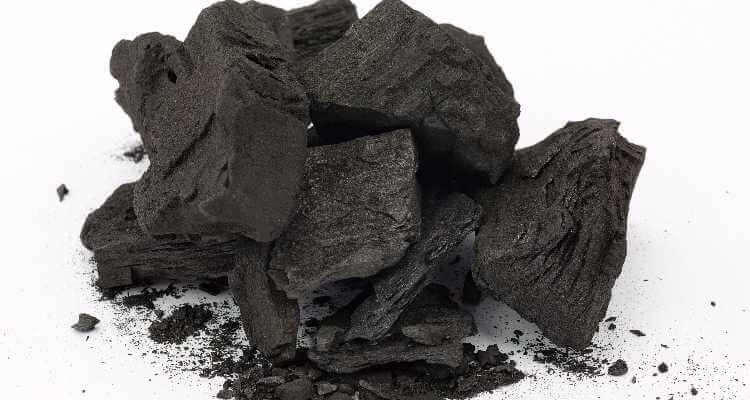Is your business considering purchasing precision air classification equipment for fine particle separation at a high throughput? Whether you’ve been toll manufacturing your materials for years or have a new product that you’d like to produce entirely on-site, you’ve come to the right place.
At AVEKA CCE Technologies, we design, build, and sell custom air classifiers for your milling needs. Here is our complete guide with everything you need to know about purchasing an air classification system.
What is air classification?
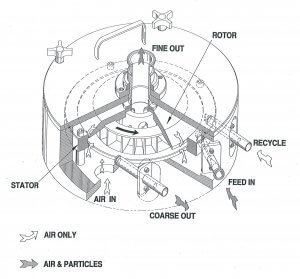
Air classification is the process in which fine particles are separated by utilizing the opposing forces of centrifugal force and aerodynamic drag. An air classifier can precisely, predictably, and efficiently sort particles by mass, resulting in a coarse particle fraction and a fine particle fraction.
How does the process work?
The coarse particle fraction, which is rejected outward by the centrifugal field, is conveyed out of the Classifier through the coarse outlet and captured in a cyclone. The cyclone overflow is returned to the Classifier through the recycle port.
The fine particle fraction leaves the Classifier through the central “fines” outlet with the primary airflow.
4 reasons to consider in-house air classification
While AVEKA would much prefer to toll manufacture your particles for you, there are several good cases for why a business would want to classify their own materials. Here are the four most common reasons to do it yourself.
1. Your shipping costs are too high
If the cost of shipping your materials to and from a processing facility is cutting into your product margins too much, you may want to consider investing in an air classification setup of your own. This is especially true if your operations are nowhere near a processing facility or your materials require special (and costly) handling instructions.
2. You’re producing a high volume of material
If you’re fortunate enough that your product is in high demand and constantly in production, then the better long-term financial option may be to air classify your materials entirely or partially in-house. While it likely won’t be cost-effective to run small batches at irregular intervals, regular full-scale production would certainly warrant an equipment purchase.
3. You require a faster turnaround
If you simply cannot wait for your material to be processed and shipped (or don’t have the warehouse space to store it in bulk), then you may want to consider air classifying it at your own facility. Many businesses rely on time-sensitive or made-to-order purchases which would greatly benefit from cutting out the middleman.
4. You have the space, capital, and qualified personnel to do it yourself
The final reason to consider air classifying in-house is – quite simply – because you can. If you have ample room in your facility to fit the equipment, enough capital to invest, and the dedicated staff members to operate it, then it’s an internal discussion you should have with your team.
What industries is air classification geared toward?
Air classification is an ideal choice for a wide variety of industries, including but not limited to:
What materials work best for air classification?
Air classification is ideal for fine powders of ceramics, abrasives, glass, minerals, and polymers. If you’re unsure whether or not your particular feed will be a good fit, here are some material properties to consider.
Good candidates:
- Dense materials
- Hard materials
- Round/spherical materials
- Free-flowing materials
- Materials that disperse well in air
Poor candidates:
- Wet materials
- Sticky materials
- Entangled materials
- Light/fluffy materials
- Materials that do not disperse well in air
Predicting whether a material will respond to air classification successfully can be difficult and often surprising, so it is always worth a feasibility trial to find out. Contact AVEKA today to schedule your material test batch.
Other important material factors to consider
What is the particle size of your feed material?
Feed material greater than 500 microns cannot be directly handled by our air classification equipment and will need to be further reduced in size before use. In addition, incoming feed material with a wide size distribution will result in a lower yield than that of a batch with a narrower size distribution.
What is your target particle size?
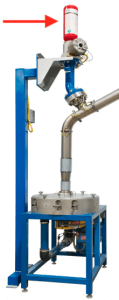
Air Classifiers can separate fine particles that are in the range of 175 microns. However, size distributions typically fall somewhere in the 5–70-micron range.
Is your material combustible?
If you plan to work with a combustible powder, you need to ensure that your air classifier has the necessary suppression systems in place. AVEKA can customize any of our models to include explosion suppression systems (see image).
Is your material abrasive?
Air classifiers are very effective at separating abrasive materials with minimal wear. This is because the system is built with wear-resistant coatings and tungsten carbide-coated components.
What are the benefits of using an air classifier?
There are many reasons to choose an air classifier over other common forms of particle classification, such as ultrasonic screening and vibratory screening. Here are six that we feel are particularly worth noting:
- Much higher throughput than traditional sieving in the fine particle size range (<75 microns)
- Capable of high-efficiency precision particle size cuts (as fine as 1 micron in some cases)
- Low maintenance and easy to clean
- Achieve narrower product size distribution
- Wear-resistant construction (tungsten carbide-coated classifier rotor and stator ring)
- Negative pressure operation allows for excellent fine powder containment and a cleaner processing area
How do I choose the right model for my needs?
AVEKA CCE Technologies offers three distinct models of air classifiers to choose from. See the chart below to compare their base specifications and system requirements.
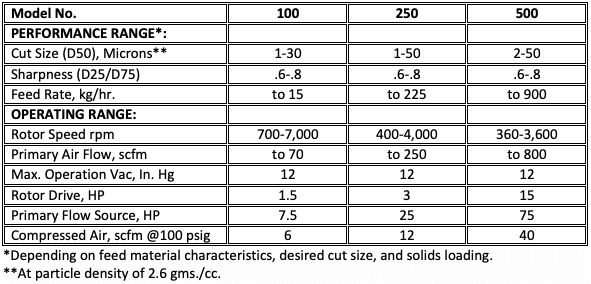
The Model 100 Classifier system is ideal for the production of lab size samples, product development, and/or small quantity production. The larger Model 250 and Model 500 offer precision classification at higher production rates.
Contact the experts at AVEKA so we can help you determine the right air classifier(s) for your needs. We are also able to customize any of these models to better suit your specific requirements.
What steps are involved when purchasing air classification equipment?
After you’ve reached out to an AVEKA representative to discuss your project/operation, these are the typical steps involved in the process of making a purchase:
1. Gather initial product/material information
2. Perform a trial run to determine feasibility and throughput needs (recommended)
3. Obtain a budgetary quote and initial purchase order
4. Work with our engineers to determine the exact specifications needed for your system
5. Obtain a finalized quote and purchase order
6. The system is custom-built, per specification
What will my air classification system include?
All AVEKA CCE Technologies Air Classification Systems come complete with:
- The air classifier assembly
- A flow source
- Coarse cyclone and fine fraction collectors
- A feed system
- Controls
While all of our air classifiers are designed with wear in mind, we do also sell replacement parts should you need them.
What kind of warranty and support can I expect?
At AVEKA CCE Technologies, we offer a 1-year warranty on all of our air classifier models. In addition, once your system is built, shipped to your facility, and installed, one of our engineers will make a site visit to check that everything is operating correctly and make any necessary adjustments. We also offer startup assistance and training so that your operators are comfortable and confident with the new system before production begins.
Where can I go to learn more and purchase an air classifier for my business?
AVEKA CCE Technologies will work closely with you to understand your needs and which model(s) best fits your application. Our engineers will work with you every step of the way to customize a system to fit well within your process and bring incredible value to your project.
Ensure your needs are met with the precision equipment that AVEKA CCE offers. Call us today to custom build your new air classification system.
